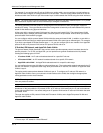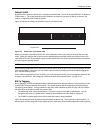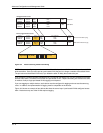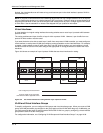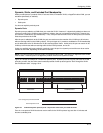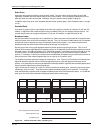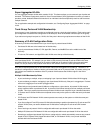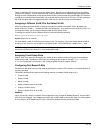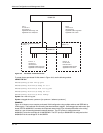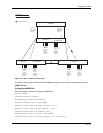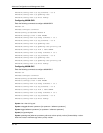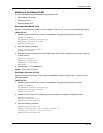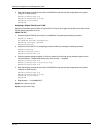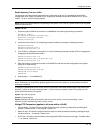
Advanced Configuration and Management Guide
Routing Between VLANs (Routing Switches Only)
The routing switches can locally route IP, IPX, and Appletalk between VLANs defined within a single routing
switch. All other routable protocols or protocol VLANs (for example, DecNet) must be routed by another external
router capable of routing the protocol.
Virtual Interfaces (Routing Switches Only)
Virtual interfaces must be defined at the highest level of the VLAN hierarchy. You need to configure virtual
interfaces if an IP, IPX, or Appletalk protocol VLAN, IP sub-net VLAN, AppleTalk cable VLAN, or IPX network
VLAN is defined within a port-based VLAN on a routing switch. You also you need to route these protocols to
another port-based VLAN on the same routing switch. You need to configure a separate virtual interface within
each of the protocol, subnet or network VLANs that are defined to the port-based VLAN. This configuration would
require three virtual interfaces for a single port-based VLAN.
If you do not need to further partition the port-based VLAN by defining separate Layer 3 VLANs, you can define a
single virtual interface at the port-based VLAN level and enable IP, IPX, and Appletalk routing on a single virtual
interface.
Bridging and Routing the Same Protocol Simultaneously on the Same Device
(Routing Switches Only)
Some configurations may require simultaneous switching and routing of the same single protocol across different
sets of ports on the same routing switch. When IP, IPX, or Appletalk routing is enabled on a routing switch, you
can route these protocols on specific interfaces while bridging them on other interfaces. In this scenario, you can
create two separate backbones for the same protocol, one bridged and one routed.
To bridge IP, IPX, or Appletalk at the same time these protocols are being routed, you need to configure an IP
protocol, IP sub-net, IPX protocol, IPX network, or Appletalk protocol VLAN and not assign a virtual interface to
the VLAN. Packets for these protocols are bridged or switched at Layer 2 across ports on the routing switch that
are included in the Layer 3 VLAN. If these VLANs are built within port-based VLANs, they can be tagged across a
single set of backbone fibers to create separate Layer 2 switched and Layer 3 routed backbones for the same
protocol on a single physical backbone.
Routing Between VLANs Using Virtual Interfaces (Routing Switches Only)
The Integrated Switch Routing (ISR) feature allows routing switches to route between VLANs. There are some
important concepts to understand before designing an ISR backbone.
Virtual interfaces can be defined on port-based, IP protocol, IP sub-net, IPX protocol, IPX network, AppleTalk
protocol, and AppleTalk cable VLANs.
To create any type of VLAN on a routing switch, Layer 2 forwarding must be enabled. When Layer 2 forwarding is
enabled, the routing switch becomes a Layer 2 switch on all ports for all non-routable protocols.
If the router interfaces for IP, IPX, or AppleTalk are configured on physical ports, then routing occurs independent
of the Spanning Tree Protocol (STP). However, if the router interfaces are defined for any type VLAN, they are
virtual interfaces and are subject to the rules of STP.
If your backbone is comprised of virtual interfaces all within the same STP domain, it is a bridged backbone, not a
routed one. This means that the set of backbone interfaces that are blocked by STP will be blocked for routed
protocols as well. The routed protocols will be able to cross these paths only when the STP state of the link is
FORWARDING. This problem is easily avoided by proper network design.
When designing an ISR network, pay attention to your use of virtual interfaces and the spanning-tree domain. If
Layer 2 switching of your routed protocols (IP, IPX, AppleTalk) is not required across the backbone, then the use
of virtual interfaces can be limited to edge switch ports within each routing switch. Full backbone routing can be
achieved by configuring routing on each physical interface that connects to the backbone. Routing is independent
of STP when configured on a physical interface.
If your ISR design requires that you switch IP, IPX, or Appletalk at Layer 2 while simultaneously routing the same
protocols over a single backbone, then create multiple port-based VLANs and use VLAN tagging on the backbone
links to separate your Layer 2 switched and Layer 3 routed networks.
16 - 12



